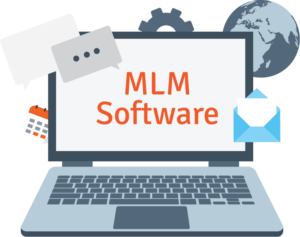The multi-level marketing financial model encompasses various aspects of revenue generation, compensation structures, and profitability for participants within the MLM system. In this guide, we will delve into the intricacies of the Multi-level marketing financial model, exploring how income is earned, the different compensation plans utilized by MLM companies, and the factors that contribute to financial success in this industry.
Understanding the financial model is essential for individuals looking to participate in Multi-level marketing financial model ventures and for those seeking to build a sustainable and lucrative business within the MLM framework.
Revenue Generation for Multi-level marketing financial model

In the Multi-level marketing financial model, revenue is primarily generated through the sale of products or services offered by the MLM company. Distributors, also known as independent business owners, earn income by selling these products or services directly to customers.
Additionally, revenue is generated through distributor purchases of products for personal use or resale.
-
Sales of Products or Services:
MLM companies typically offer a range of products or services in various categories such as health and wellness, beauty, skincare, nutrition, household items, and more.
Distributors earn commissions on the retail sales they make directly to customers. These commissions are usually a percentage of the sales price of the products or services.
Customers can purchase products directly from distributors through face-to-face interactions, online sales channels, or through catalog sales.
-
Distributor Purchases:
Distributors may also purchase products from the MLM company for personal use, demonstration purposes, or resale to customers.
Distributor purchases contribute to the company’s revenue stream, as distributors typically buy products at wholesale prices and sell them at retail prices to earn a profit.
Some MLM companies may require distributors to meet minimum purchase requirements to remain active within the organization and qualify for commissions and bonuses.
Overall, revenue generation in Multi-level marketing financial model is driven by both direct sales to customers and distributor purchases, with commissions and bonuses paid out to distributors based on their sales volume and the performance of their downline teams.
Compensation Structures
Multi-level marketing financial model companies utilize various compensation structures to reward distributors for their sales efforts and the performance of their downline teams.
These compensation plans are designed to incentivize distributors to generate sales, recruit new team members, and build a thriving organization. Here are the key components of Multi-level marketing financial model compensation structures:
-
Direct Sales Commissions:
Distributors earn commissions on their direct sales of products or services to retail customers. Commissions are typically calculated as a percentage of the sales price of the products or services sold.
Direct sales commissions provide immediate income to distributors based on their individual sales efforts. The higher the sales volume, the higher the commissions earned.
-
Downline Commissions:
In addition to earning commissions on their own sales, distributors can also earn commissions on the sales generated by their recruited team members, known as their downline.
Downline commissions are typically calculated as a percentage of the sales volume generated by the distributor’s downline team, often through a multi-level or hierarchical structure.
As distributors build larger and more successful downline teams, they can earn higher commissions and bonuses based on the sales performance of their entire organization.
-
Bonuses and Incentives:
MLM companies offer various bonuses and incentives to motivate and reward distributors for achieving specific sales targets, rank advancements, and other milestones.
Common bonuses and incentives include leadership bonuses, rank advancement bonuses, car bonuses, travel incentives, and recognition programs.
These bonuses and incentives provide additional income and recognition to distributors who demonstrate exceptional performance and leadership within the organization.
Overall, Multi-level marketing financial model compensation structures are designed to provide distributors with multiple streams of income, including commissions on their own sales, commissions on the sales of their downline teams, and bonuses and incentives for achieving specific goals and milestones.
These structures encourage distributors to focus on both personal sales and team building activities, driving growth and success within the MLM organization.
Profitability Analysis

Profitability Analysis in Multi-level Marketing (MLM):
Analyzing profitability is essential for understanding the financial viability and success of an Multi-level marketing financial model business.
Profitability analysis involves evaluating the relationship between revenue generated, expenses incurred, and the resulting profits earned by participants within the MLM system. Here are the key components of profitability analysis in MLM:
-
Expenses:
Participants in MLM incur various expenses associated with running their business, including product purchases, marketing materials, training programs, and other operational costs.
Expenses may also include fees or dues paid to the MLM company for participation in the program, as well as any additional costs related to maintaining active status or accessing company resources.
It’s important for participants to accurately track and manage their expenses to ensure profitability and financial sustainability in the long term.
-
Profit Margins:
Profit margins in Multi-level marketing financial model refer to the difference between the revenue generated from sales and the expenses incurred to generate that revenue.
Profit margins can vary depending on factors such as the pricing structure of products or services, the efficiency of sales and marketing efforts, and the effectiveness of expense management.
Participants can calculate their profit margins by subtracting their total expenses from their total revenue and then dividing the result by their total revenue, expressed as a percentage.
Understanding profit margins helps participants assess the overall profitability of their Multi-level marketing financial model business and make informed decisions about resource allocation and business strategy.
-
Return on Investment (ROI):
ROI measures the efficiency and effectiveness of an investment by comparing the return generated to the initial investment made.
In the context of Multi-level marketing financial model, participants can calculate their ROI by dividing their net profit (revenue minus expenses) by their initial investment and then multiplying the result by 100 to express it as a percentage.
A positive ROI indicates that the investment in the Multi-level marketing financial model business has generated a profitable return, while a negative ROI suggests that the investment has not been profitable.
By conducting profitability analysis, participants can assess the financial health of their Multi-level marketing financial model business, identify areas for improvement, and make strategic decisions to maximize profitability and long-term success.
Insights Into Multi-Level Marketing Statistics
Factors Affecting Financial Success

Factors Affecting Financial Success in Multi-level Marketing (MLM):
Several factors contribute to the financial success of participants in Multi-level marketing financial model. Understanding these factors is crucial for maximizing earning potential and achieving sustainable growth in the MLM business. Here are some key factors that can impact financial success in MLM:
-
Sales Volume:
The volume of product or service sales generated by a participant directly influences their earning potential in MLM.
Participants who consistently generate higher sales volumes typically earn higher commissions and bonuses from the MLM company.
-
Team Building:
Building a successful downline team is essential for financial success in MLM.
Participants earn commissions and bonuses not only from their own sales but also from the sales generated by their recruited team members.
As participants build larger and more productive downline teams, their earning potential increases significantly.
-
Marketing Strategies:
Effective marketing strategies play a critical role in attracting customers, generating sales, and building a thriving MLM business.
Participants who employ innovative and strategic marketing tactics, such as social media marketing, email marketing, content creation, and networking, can reach a larger audience and drive more sales.
-
Training and Support:
Access to comprehensive training and support from the MLM company is essential for helping participants develop the skills and knowledge necessary for success.
Participants who receive ongoing training, mentorship, and support are better equipped to navigate the challenges of Multi-level marketing financial model and achieve their financial goals.
-
Persistence and Resilience:
Persistence and resilience are key attributes of successful MLM participants.
Building a successful MLM business requires dedication, perseverance, and the ability to overcome obstacles and setbacks along the way.
Participants who remain committed to their goals and continue to take action despite challenges are more likely to achieve financial success in the long term.
-
Leadership and Mentorship:
Effective leadership and mentorship are essential for guiding and supporting downline team members.
Participants who provide strong leadership and mentorship to their team members can foster a culture of success, motivation, and collaboration within their organization.
By understanding and leveraging these factors, participants can increase their chances of financial success in MLM and build a profitable and sustainable business over time.
Conclusion
In conclusion, the Multi-level marketing financial model is complex and multifaceted, encompassing various revenue generation strategies, compensation structures, profitability analysis, and factors affecting financial success.
Participants in Multi-level marketing financial model have the opportunity to generate income through direct sales, downline commissions, bonuses, and incentives, but achieving financial success requires careful planning, strategic execution, and ongoing effort.
By understanding the revenue generation mechanisms, compensation structures, and profitability analysis outlined in this guide, participants can make informed decisions about their MLM business and maximize their earning potential. Factors such as sales volume, team building, marketing strategies, training and support, persistence, and leadership play critical roles in determining financial success in Multi-level marketing financial model.
Ultimately, success in MLM is achievable for those who are willing to put in the work, learn from experience, and adapt to changing market conditions.
By focusing on providing value to customers, building strong relationships, and fostering a culture of collaboration and support within their organization, participants can build a profitable and sustainable Multi-level marketing financial model business over time.
Other Questions
- What is the primary source of revenue in MLM?
The primary source of revenue in MLM is the sale of products or services offered by the MLM company.
- How do distributors earn income in MLM?
Distributors earn income through commissions on their own sales, commissions on the sales of their recruited team members (downline), and bonuses and incentives for achieving specific goals and milestones.
- What are some typical expenses associated with participating in MLM?
Typical expenses in MLM include product purchases, marketing materials, training programs, and other operational costs.




